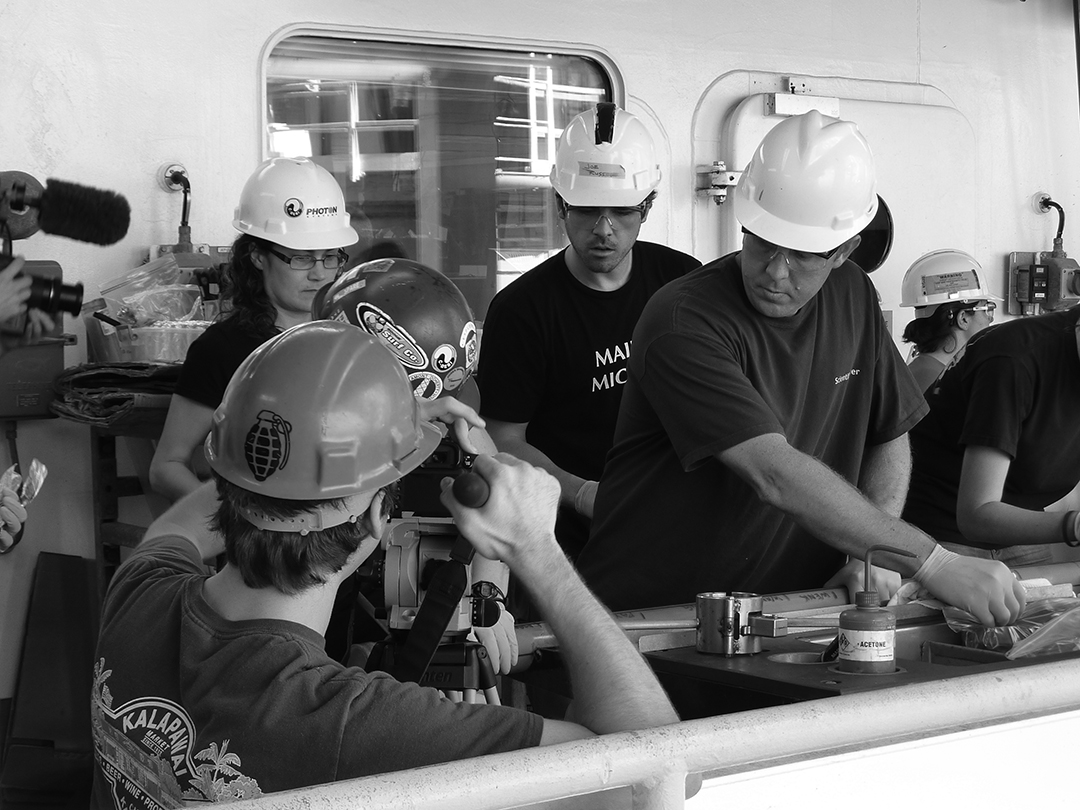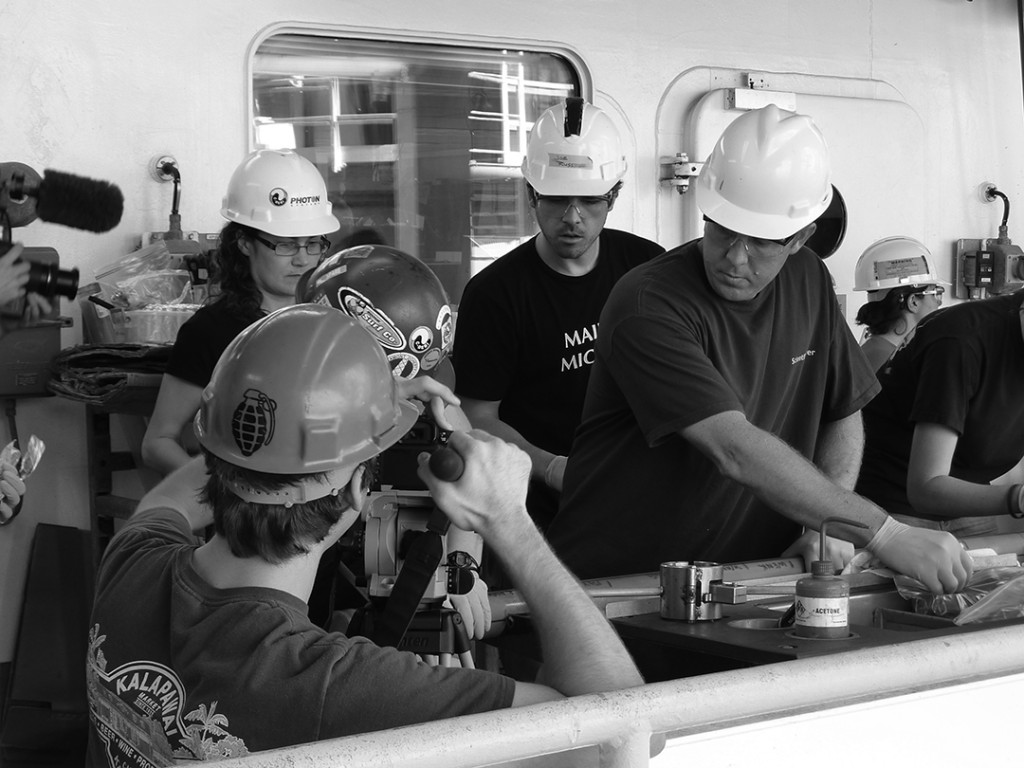New Professor Strengthens Microbiology Program
Photo courtesy of Heath Mills
Heath Mills (right forefront), professor of biology, works with students on one of his drilling expeditions.
THE SIGNAL
KELSEY BENOITTHE SIGNAL
UHCL’s newest professor in the School of Science and Computer Engineering, Heath Mills, arrived on campus with a grant and research opportunities for students already in place.
Mills brought with him a grant from the National Science Foundation (NSF). The NSF is accountable for one-fourth of fed-eral support to grade schools, colleges and universities in the United States for science and engineering research and education.
“The microbiology program has kind of floundered in the past 10 years, especially since the previous microbiologists have retired,” said Larry Rohde, associate pro-fessor of biology. “So we are now at a level that I think we can take microbiology into a new realm, and we are all excited about it.”
Mills, professor of biology, was born and raised in North Carolina, graduated from Duke University with a B.S. in biol-ogy, focusing on zoology. After finishing his undergrad, Mills went on to become a technician at a cancer research lab at Clark Atlanta University for a year and a half. Mills continued his education at Georgia Tech University, earning his M.S. in biol-ogy, specializing in applied microbiology. He earned his Ph.D. at Georgia Tech.
In 2008, Mills became an assistant professor at Texas A&M University in the Oceanography department. It was at this point that he started working with the Inter-national Ocean Discovery Program (IODP) and began drilling deep into the ocean floor. He now has samples from all over the world including: Japan, the Great Barrier Reef and the Atlantic Ocean.
“One-tenth to one-third, depending on who you believe in the field, of all bio mass on the planet may be beneath the sea floor,” Mills said to explain why they do all of this drilling. They drill, Mills said, to see what is down there and to “see what it means to be alive, what it takes to be alive, what are the limits of life on the planet.”
This is where the National Science Foundation grant Mills received and brought with him to UHCL comes in; Mills said the grant is to go into the Earth’s crust and to see “who’s there and what they are doing.”Mills has gathered samples of the earth’s crust ranging in age from a few thousand years old to 120 million years old.
As Mills gathers samples in his drillings, he brings those samples back to UHCL where he and his independent study stu-dents research them. Students get to have a hands-on-learning experience working in the labs with these samples with a professor who has years of discovery and research under his belt.
While drilling with the IODP Expedi-tion 329, South Pacific Gyre with colleague Brandi Reece of USC, Mills collected sediment samples. When Mills and Reece tested the samples in the lab they discov-ered they were able to culture some fungi in the 120-million-year-old sediments. Mills and Reece knew they had something when they were both able to detect the same fungi at their different schools.
“Several of the species we have ac-quired are related to the penicillium that is one of the workhorses for the production of penicillin,” Mills said.
Although this is a big find, the research is not complete. Mills is continuing his study on the fungi here at UHCL with his students. They will continue to research these samples until they know what they have found and if it has the antibiotic char-acteristics of the market penicillin. Mills and his students are working to characterize the different fungi better and plan to write a paper about their findings.


